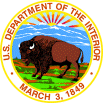
U.S. Fish and Wildlife Service, Division of Migratory Bird
Management,
U.S. Geological Survey, Patuxent Wildlife Research Center
Background
Vision
In an effort to increase the accessibility of bird data and information useful in planning and evaluation of bird conservation strategies as well as in natural resource management, the U.S. Fish and Wildlife Service (USFWS), U.S. Geological Survey (USGS) Patuxent Wildlife Research Center, and USGS Center for Biological Informatics worked together under the umbrella of the National Biological Information Infrastructure (NBII) to establish and implement the NBII Bird Conservation Node (BCN). The BCN was intended to facilitate rapid access to North American bird population and habitat data maintained by a broad coalition of Federal, state, and non-governmental partners in conservation. Unfortunately, in the 2012 President's Budget Request, the National Biological Information Infrastructure (NBII) was terminated. As a result, all resources, databases, tools, and applications within the web site were removed on January 15, 2012. This included the BCN website as well.
The timely availability of data is critical to support bird conservation activities. Primary sources of information, such as data sets resulting from bird inventories, surveys, and monitoring programs, provide baseline information used in assessments of status and trends of North American bird populations. In order to make important agency databases available through the Bird Conservation Node, the USFWS and USGS formed this Migratory Bird Data Center. Building upon complementary capabilities of the USFWS and the USGS, the objectives of this Center were to: (1) assemble and document bird population and habitat data maintained by these agencies at their finest levels of spatial and temporal resolution; (2) assure that databases remained current through periodic update; and (3) provide web-based access to the data by researchers and managers for strategic planning and evaluation of avian conservation strategies.
Status
The Migratory Bird Data Center came online in the spring of 2002 through the collaborative efforts of the USFWS’s Migratory Bird Program, and the USGS Patuxent Wildlife Research Center and Center for Biological Informatics. To demonstrate the utility of the Data Center, visualization and query capabilities were developed for important bird population databases. While the server that houses this website is still being maintained by the USFWS, no additional data beyond 2015 have been added. Additionally, webpages associated with the various databases are no longer being updated.
Overview of the Options and Tools for Accessing Data
The Data Center Home Page offers 2 primary options for viewing and retrieving bird population and habitat data maintained by the U.S. Fish and Wildlife Service and the U.S. Geological Survey's Patuxent Wildlife Research Center. Links to these options are found directly on the Data Center Home Page. Options for viewing and retrieving data include:
General Information: links to survey/database information including a brief abstract and scientific references.
Database Query Form: links to a web-enabled query form (builder) that enables the user to construct a complex relational query of a bird population database maintained by the Data Center. All queries will specify the database of interest, the time interval, the species of interest, and the geographic region of interest. Some databases may allow selection of additional criteria.
Interactive Mapping Application & Retrieve Geospatial Data: The Bird Mapping Application of the NBII Bird Conservation Node, http://mbirdims.fws.gov, is no longer available.
The data sets formerly accessible at this site can still be obtained through the
- USFWS Migratory Bird Data Center: https://migbirdapps.fws.gov/
- USGS Patuxent Wildlife Research Center
website:
- Breeding Bird Atlas data: no longer available
- Breeding Bird Survey data: http://www.pwrc.usgs.gov/bbs/
Please note, while the U.S. Fish and Wildlife Service still maintains the server
that houses this website, data and webpages are no longer being updated.


